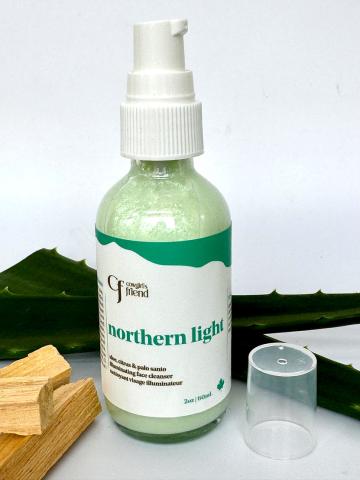Product Description
60mL - 2 oz // NORTHERN LIGHT // Get that fresh, luminous glow. This cleanser leaves your face and neck feeling clean, refreshed and perfectly hydrated while maintaining your skin's natural oils & pH balance. It’s like a shimmery boost for your skin, leaving you ready to shine.
